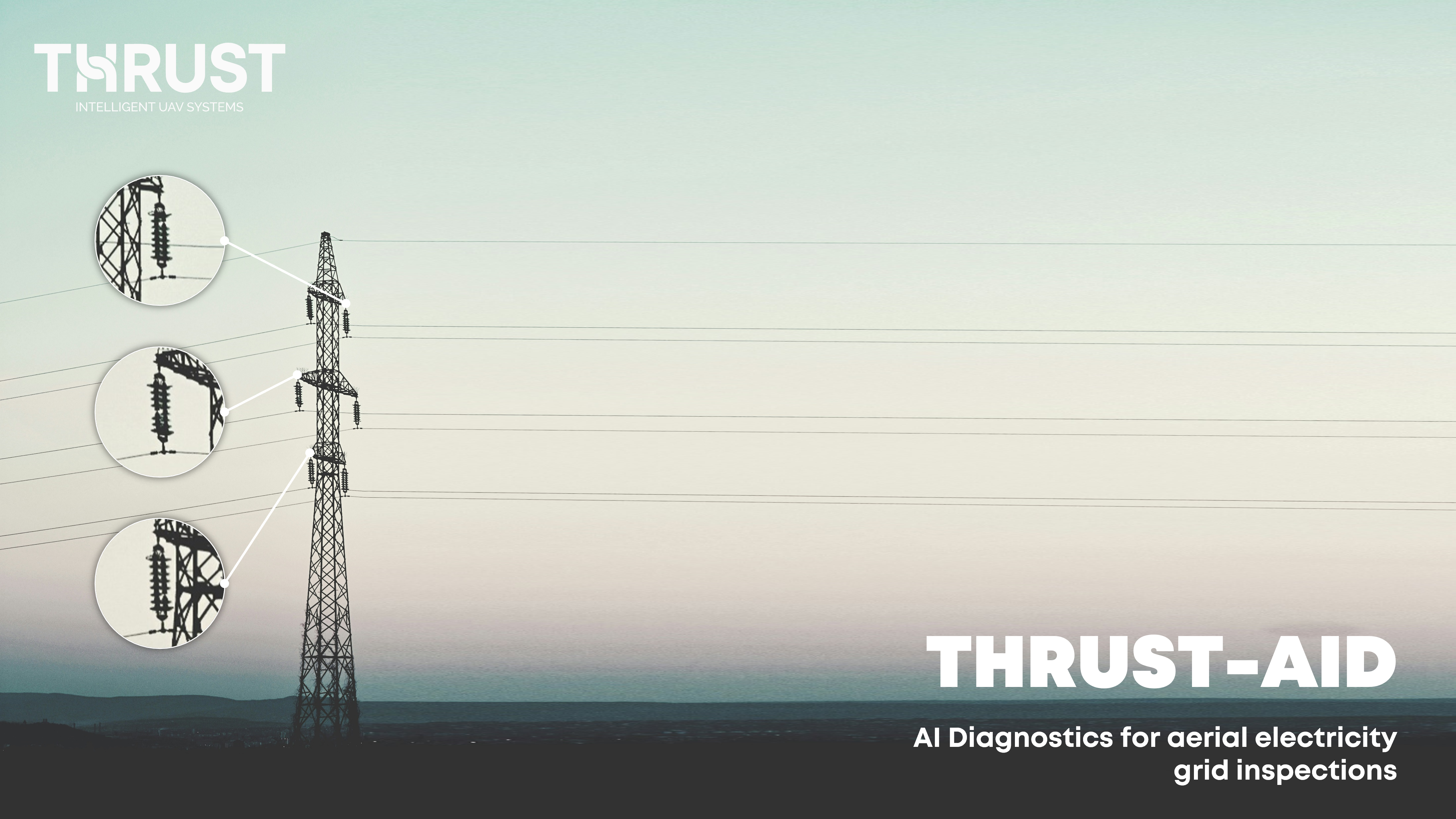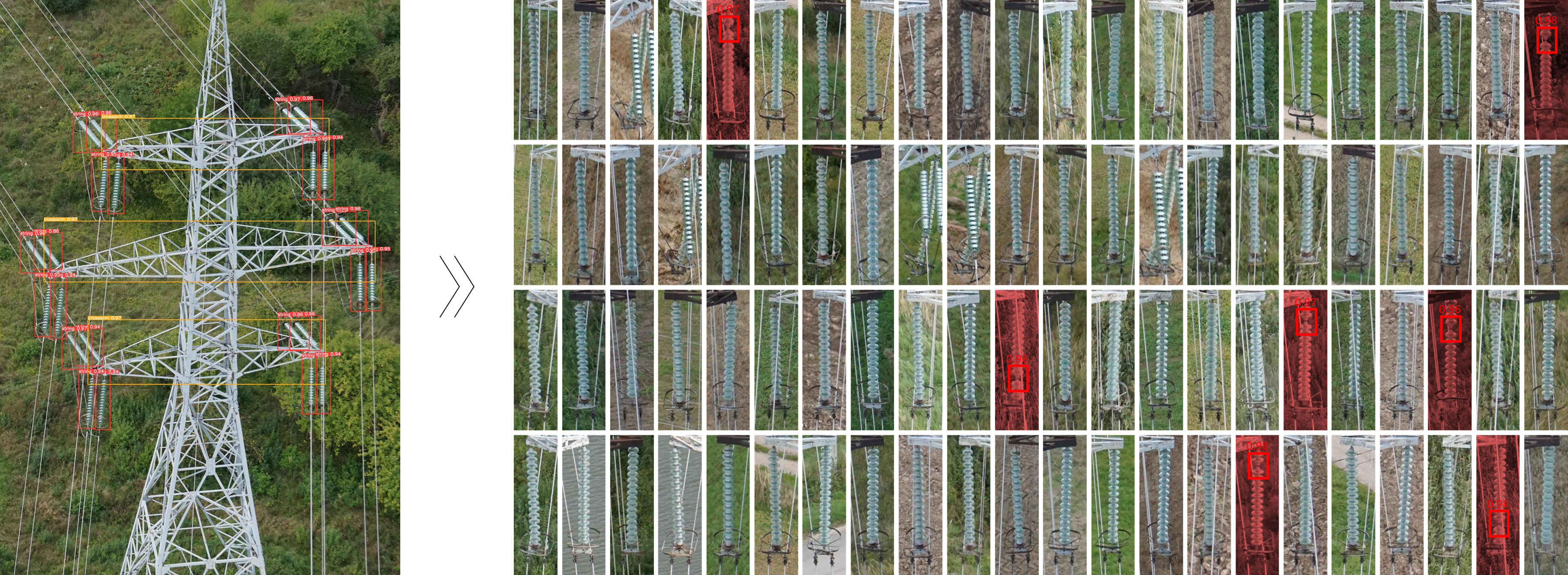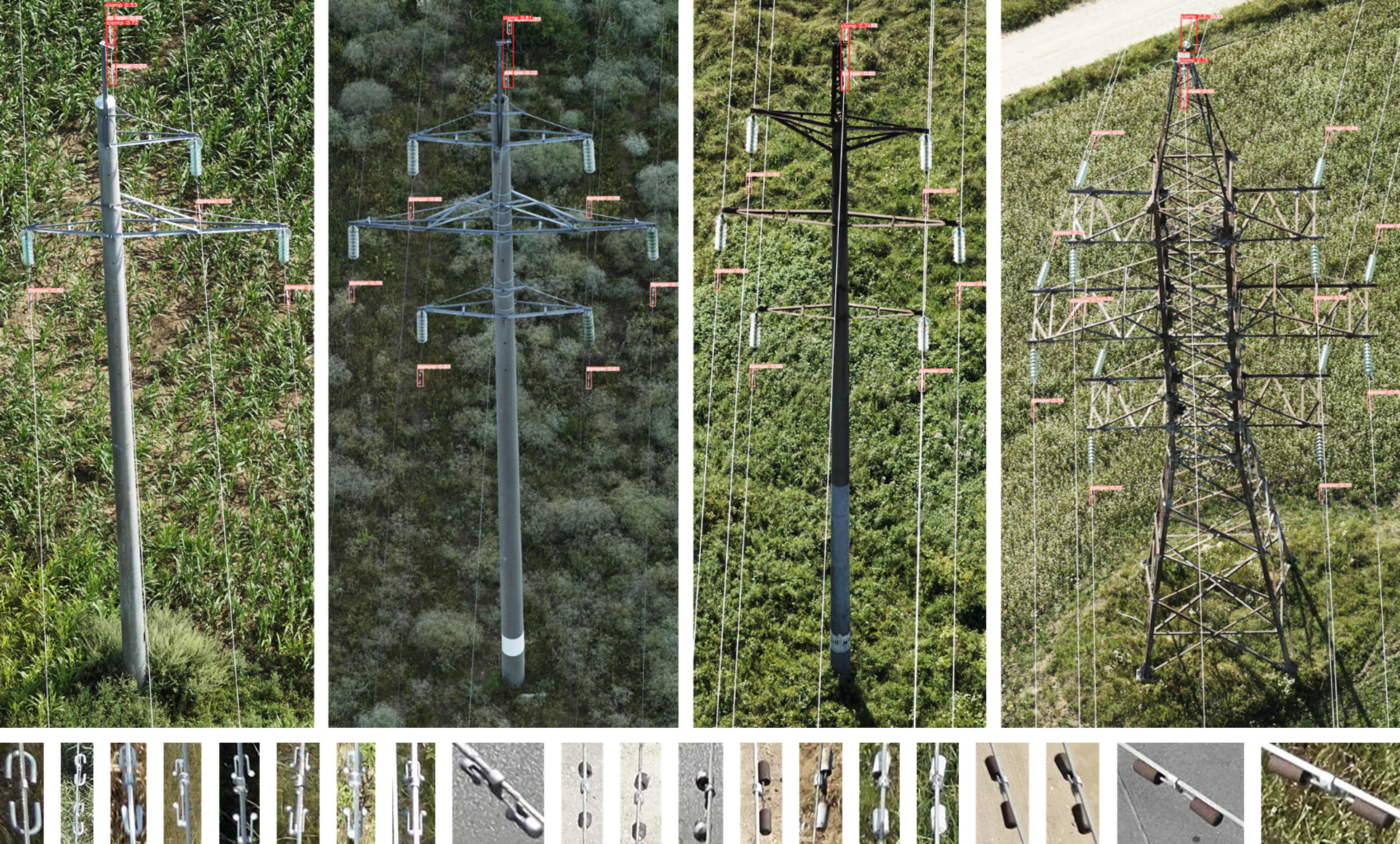THRUST-AID

THRUST-AID: AI Diagnostics for aerial electricity grid inspections
Problem: In the EU the total length of overhead power lines reaches staggering 5.3 mln. km that need to be routinely inspected and maintained. However, current manual diagnostics practices are highly inefficient and prone to human error. Walking crews focus on reactive maintenance, are inaccurate and slow, while massive amount of data collected by aviation is simply impractical to be analysed by personnel. We estimate that in the EU these inspections demand 3.1 mln. man-hours annually. Despite all this environmental damage, time, and money put into ensuring reliability of the grid, the outages are still prevalent across the EU. We estimate that the reported 10+ thousand forced power outages in the transmission grid alone result in 7-10 bEUR in economic losses per year in the EU.
Purpose: THRUST-AIDs objective is reduction of these outage-related economic losses, inspection cost, and environmental impact by providing a reliable AI-based tool for timely automatic defect detection in aerial imagery of transmission power grid. THRUST-AID is based on deep-learning models for computer vision that are finetuned using professionally annotated ultra-high resolution aerial imagery of transmission grid. We use pre-trained detection, classification & segmentation models (transfer learning) within PyTorch framework as a basis for our customized analytics solution. THRUST-AID software is trained on diverse 24-100 MP oblique aerial imagery selected from the entire Lithuania’s transmission network, totalling more than 3 million photographs from 6500+ km of power lines. The software detects defects of pylon elements (insulator strings, wire clamps & spacers, vibration dampers, etc.), as well as extraneous objects within the protective zone (e.g., debris, illegal activity). Each detected defect is assigned a unique ID based on GIS metadata, then classified depending on severity & risk, and reported automatically via a user-friendly interface to enable predictive maintenance.

Strengths: Existing AI-based power line defect detection solutions (both commercially available and reported in scientific literature) typically focus on a single type of infrastructure (e.g., 300 kV power lines) or have a limited scope of detectable defects due to the lack of training materials and/or inability to gather multi-sensor data in high resolution. During the past years, the entire Lithuania’s transmission power grid (6500+ km, 110-400 kV) was scanned using nadir and oblique aerial photography as well as high resolution airborne LiDAR system. The cooperation with the data owner - national TSO - granted us access to comprehensive, national-scale data, that is rich in defect examples, for training of our NN-based models. Furthermore, our heavy-duty THRUST fixed-wing drone platform (MTOM 25 kg, 5-8 kg payload, 40-120 km/h speed range) enables on-demand collection of ultra-high-definition multi-sensor data. This opened new frontiers for inspecting incidental cases and detecting defects of smaller infrastructure elements, e.g., vibration dampers, conductor connections or spacers, in addition to less challenging larger parts, like insulator strings. Owing to these rich datasets, we can develop exhaustive, highly accurate, and reliable automated analytics solutions, covering all powerline types and including not only the most frequent and large, but also rarer and smaller defects.

Predictive maintenance: As each defect has defined coordinates and a unique ID, with THRUST-AID, routine monitoring will allow for estimation of infrastructure degradation trends that can be used as predictive maintenance measures. Said approach covers corrosion propagation as well as gradual loss of structural integrity (cracking, breakage, bending, etc.). Efficiency-wise, despite data-intensive multi-sensor imagery source, our optimized multi-stage analytics algorithms are capable of analysing data within minutes, in contrast to several hours required for manual data revision.
Mission: With the help of THRUST-AID system, we are on a mission to transform the electricity grid diagnostics market by eliminating highly inefficient manual data analytics technologies, setting new standards for inspection quality, accuracy, & speed, and, in combination with our superior UAV platform, eliminate high-risk climate-damaging inspection techniques (walking crews and helicopters) in the energy sector.
Functionality: THRUST-AID AI analytics system takes the following input data:
1) oblique aerial imagery (front and/or rear view, less than 1 cm/px GSD) with geolocation metadata (X, Y, Z, yaw, pitch, roll, omega, phi, kappa, AGL height)
2) GIS vector files of infrastructure to be inspected (pylons and powerline).
The tool generates different types of output reports:
1) MS Excel datasheets with detected defects and their characteristics,
2) GIS vector files with the location and characterizing attibutes of defects, and
3) individual element defect cards with indicated defect location and characterizing metadata.
The reporting format can be adjusted and tailored to the client needs.
Service modes: Full THRUST-AID services can be utilized in two modes:
1) together with aerial inspection using THRUST UAVs and
2) as large-scale aerial imagery analytics services for powerline diagnostics.
✉
Please contact us for further details and demonstration possibilities via e-mail, LinkedIn or fill in our contact form.
Please contact us for further details and demonstration possibilities via e-mail, LinkedIn or fill in our contact form.
Support: This THRUST-AID powerline diagnostics solution is part of a project that has received funding from the European Union’s Horizon 2020 research and innovation programme under grant agreement No 101016508.
